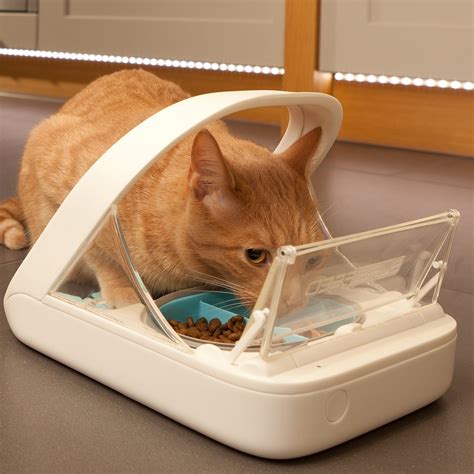Introduction: The Rise of Automated Cat Feeding
In the realm of pet care, technology has revolutionized the way we interact with our furry companions. Automatic cat feeders, a testament to this convenience revolution, have gained immense popularity in the past decade. However, as with any technological advancement, the question of safety inevitably arises.

Fire Hazards Associated with Automatic Cat Feeders
The grim reality is that automatic cat feeders, while promising convenience, carry potential fire hazards that demand our attention.
Electrical Malfunctions
Electrical components are the heart of any automatic cat feeder. Unfortunately, defects in these components, such as short circuits or faulty wiring, can spark fires if left unchecked.
Motor Overheating
The constant motor activity required to dispense food can lead to overheating, especially in poorly designed feeders. This overheating can eventually trigger a fire.
Plastic Components
Many automatic cat feeders incorporate plastic parts, which are susceptible to melting and igniting under extreme heat.
Statistics on Automatic Cat Feeder Fires
According to the National Fire Protection Association (NFPA), between 2015 and 2019, there were over 4,000 reported fires caused by electrical failures involving appliances and lighting fixtures. While specific data on automatic cat feeder fires is limited, it is reasonable to assume that they contribute to this alarming statistic.
Comparing the Benefits and Risks
Benefits of Automatic Cat Feeders:
- Enhanced feeding schedule adherence, ensuring timely meals.
- Convenience for pet owners, especially during extended absences.
- Portion control, promoting healthy weight management.
Risks of Automatic Cat Feeders:
- Potential for electrical malfunctions and subsequent fires.
- Risk of motor overheating and ignition.
- Flammability of plastic components.
Transitioning to Safer Automatic Cat Feeding Practices
While the convenience of automatic cat feeders cannot be denied, it is crucial to prioritize safety. Here are some strategies:
Choosing Safe Feeders
- Opt for feeders with built-in safety features, such as overheat protection and ETL certification.
- Avoid feeders with excessive plastic parts.
- Ensure proper assembly and use as per manufacturer’s instructions.
Regular Maintenance and Inspection
- Regularly dust the feeder to prevent electrical component build-up.
- Inspect cords for damage and replace if necessary.
- Monitor the feeder during operation for any unusual noises or smells.
Fire Safety Precautions
- Keep the feeder away from flammable materials.
- Place the feeder on a flat, stable surface to prevent tipping.
- Never leave the feeder plugged in or running unattended.
- Have a fire extinguisher readily accessible.
Common Mistakes to Avoid
- Using feeders with known defects or missing safety certifications.
- Overfilling the feeder, which can strain the motor and increase the risk of overheating.
- Ignoring maintenance and inspection schedules, allowing potential hazards to go unnoticed.
- Storing food in the feeder for extended periods, increasing the risk of spoilage and attracting pests.
FAQs: Addressing Concerns
Q. Are automatic cat feeders safe to use?
A. With proper precautions, such as choosing safe feeders and following safety guidelines, automatic cat feeders can be a safe and convenient feeding solution.
Q. What should I do if my feeder malfunctions?
A. Unplug the feeder immediately and contact the manufacturer for assistance or repair. Do not attempt to fix it yourself.
Q. How often should I maintain my feeder?
A. Regular maintenance, including dust removal and cord inspection, is recommended every few months.
Q. Can I leave my feeder plugged in all the time?
A. For safety reasons, it is advisable to unplug the feeder when not in use.
Current Status and Future Directions
The demand for automatic cat feeders is expected to continue growing, especially with the increasing trend of pet ownership and advancements in technology. However, the issue of fire hazards must be addressed proactively.
Collaboration for Safer Feeders
Collaboration between manufacturers, regulators, and consumer organizations is crucial to develop and enforce safety standards for automatic cat feeders.
Innovative Designs and Materials
Research and development should focus on innovative designs that reduce the risk of electrical malfunctions and overheating. Additionally, exploring fire-resistant materials for feeder components could enhance safety.
Conclusion: Striking a Balance between Convenience and Safety
Automatic cat feeders offer immense convenience, but safety must remain paramount. By implementing the strategies outlined above and promoting awareness, pet owners can harness the benefits of these devices while mitigating potential fire hazards. It is through collective vigilance and innovation that we can create a future where both convenience and safety coexist harmoniously in the realm of pet care.





















